Round The World and other travels
A frequent flyer's collection of trip diaries
This is: Bohemian Rhapsody (2014)
Home of the amber nectar
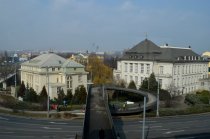 |
| ABOVE: Walkway from Hotel Angelo to the Pilsner Urquell brewery |
By midday on Thursday we had successfully relocated to Plzeň (German name Pilsen), the largest city in West Bohemia. Our journey had involved two trains: first a relatively short hop from Karlovy Vary to Cheb (known as Eger in Germany and situated about 3 miles from the border with that country), followed by a longer run to the destination. We'll use the name 'Pilsen' for this one, as the Czech version tends to be problematic for English speakers. The German name is also key to understanding why the city deserved a place on our busy itinerary, for just as Frankfurt gave us the frankfurter sausage, so Pilsen is the home of pilsner beer (sometimes written as pilsener and often abbreviated to pils).
Our prime objective was a tour of the Pilsner Urquell brewery, birthplace of the generic variety of beer known as pilsner which accounts for more than two-thirds of world beer consumption, and today still the home of the most popular specific beer brand in the Czech Republic. And all we had to do was cross the road from our hotel using the thoughtfully provided pedestrian footbridge!

 Although it was lunchtime already, there was space on a tour leaving within
minutes and we decided to join it. We learned that Pilsen was
formally founded as a town in 1295, through the granting of a
royal charter, and that from those early days production of
traditional, dark-coloured beer took place in small, family-run
businesses. In 1842, these small brewers were invited to merge their
businesses and become shareholders in a bold new venture: a
large-scale, brand-new brewery that would produce an innovative new
product, pale in colour and strongly hopped. And, you could
say, the rest is history. Today, Pilsner Urquell is part of the
global conglomerate SAB Miller and that 19th-century new product is
firmly established as the world's favourite type of beer.
Although it was lunchtime already, there was space on a tour leaving within
minutes and we decided to join it. We learned that Pilsen was
formally founded as a town in 1295, through the granting of a
royal charter, and that from those early days production of
traditional, dark-coloured beer took place in small, family-run
businesses. In 1842, these small brewers were invited to merge their
businesses and become shareholders in a bold new venture: a
large-scale, brand-new brewery that would produce an innovative new
product, pale in colour and strongly hopped. And, you could
say, the rest is history. Today, Pilsner Urquell is part of the
global conglomerate SAB Miller and that 19th-century new product is
firmly established as the world's favourite type of beer.
Our tour proceeded to visit the bottling plant, an exhibition on the
theme of the ingredients used, and the historic and modern
brewhouses. The highlight was a visit to the rather chilly cellars,
where we were able to taste unfiltered and unpasteurised Pilsner
Urquell drawn straight from one of the great oak barrels. Our tour
guide Honza did a great job and the main impression I was left with
was the sheer industrial scale on which this famous product is now
created. As it was now well past our usual lunchtime, it was only
natural that we ended the visit by calling at the in-house dining
room, where I wolfed down some traditional fare - oh, and a beer of
some description.
![]()
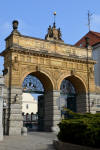 |
 |
 |
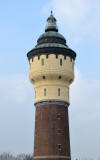 |
 |
 |
 |
 |
 |
 |
We emerged into somewhat cloudier conditions and as it was already mid-afternoon, there was only time for a quick look around the city centre. It was actually sufficient, as the main attraction here was always going to be the brewery. Nevertheless, there were a few sights worth seeing, including the main square, the Gothic cathedral dedicated to St Bartholomew, the Great Synagogue (astonishingly, the third-largest Jewish temple in the world), the Italian-designed, Renaissance-style Town Hall and the Museum of West Bohemia.
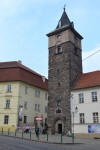 |
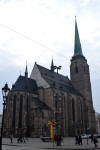 |
 |
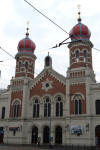 |
 |
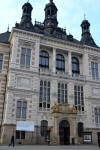 |
After all that, we were happy to return to the Hotel Angelo for a rest, followed in due course by cocktails at the bar and a light supper at a nearby Asian restaurant. It had been an early start and there would be more of the same the following day.
